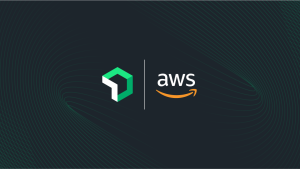In the world of software, knowing what's happening inside your application is crucial. Logging is like keeping a diary of what your application does, and among different kinds of logging, trace-level logging is like taking detailed notes. Imagine being able to see every tiny step that your application takes, just like watching a play and knowing every actor's move. Trace-level logging allows you to do just that.
New Relic, a leading observability platform, empowers developers and operators with advanced tools to implement and analyze trace-level logging. It's like having a powerful magnifying glass that lets you look closely at the inner workings of your software.
This blog post will explore the world of trace-level logging. You'll learn what it is, why it's valuable, and how using New Relic makes it all easier. Whether you're a seasoned developer or just curious about how the software works, read on to discover how trace-level logging with New Relic can provide you with detailed insights that can make all the difference.
Understanding trace-level logging
Trace-level logging is the most detailed level of logging within the spectrum of log levels that developers can use. While other levels such as INFO, WARN, and ERROR provide summarized information about an application's operation, trace-level logging gives you a step-by-step account. Imagine it as an ongoing narrative that details everything that is happening within the system. It's like having a continuous, moment-by-moment diary of the application, including function calls, loop iterations, variable changes, and more. This level of detail makes trace-level logging an invaluable tool when you need a comprehensive understanding of how a particular part of an application behaves.
Trace-level logging vs. other log levels
Different log levels are designed to capture varying granularities of information. Understanding how trace-level logging compares to other levels helps in choosing the right tool for the job. Here's a breakdown of the distinctions:
- TRACE: Captures the finest details of application behavior, akin to a step-by-step narrative making it ideal for deep debugging and understanding intricate workflows.
- DEBUG: Focuses on information beneficial for regular debugging scenarios. It summarizes events leading to specific outcomes without getting lost in the minutiae.
- INFO: Chronicles the general flow and significant state changes within the application, offering an overview rather than an in-depth analysis.
- WARN/ERROR: Primarily oriented towards capturing and highlighting anomalies, exceptions, or errors in the application. Their purpose is to flag problematic behaviors or outcomes.
To visualize the difference: imagine watching a movie. A INFO log is like the movie trailer, giving you the overall plot. DEBUG is the director's commentary, pointing out significant scenes and decisions. TRACE, on the other hand, includes every behind-the-scenes detail, including every script edit, camera angle, and production choice.
By selecting the right log level for a given scenario, developers and IT professionals can capture the appropriate depth and breadth of information they need without overwhelming their systems or themselves.
Benefits of trace-level logging
Trace-level logging is more than just a tool for detailed observation; it offers concrete advantages in various domains of software development and operations. Here’s an exploration of the key benefits:
Insight into system behavior
Trace-level logging allows you to observe your system at the most granular level. You can see how data flows through different components, how objects are created and manipulated, and even how individual functions are executed.
- Complex Systems Analysis: In multi-tier or microservices architectures, trace-level logging helps you understand the intricate interactions between different parts.
- Understanding Legacy Systems: If you're working with older code or third-party components with limited documentation, trace-level logging can be an invaluable tool to understand how things work.
Enhanced error detection and troubleshooting
Troubleshooting problems, especially elusive and intermittent ones, can be challenging. Trace-level logging can be a powerful ally in these situations:
- Identifying Root Causes: By recording every detail, you can replay scenarios to understand precisely where and why something failed.
- Predictive Maintenance: By analyzing trends in trace-level logs, you can potentially predict and address issues before they become critical failures.
Optimizing performance
Trace-level logs can reveal performance bottlenecks and optimization opportunities that might be invisible at higher logging levels:
- Pinpointing Inefficiencies: By looking at the detailed execution flow, you can identify areas where optimizations, such as caching or parallelization, could be applied.
- Monitoring Resource Utilization: Trace logs can show how resources like memory and CPU are used, helping you optimize them for better performance.
Compliance and security measures
In some regulatory environments, detailed logging may be a requirement. Trace-level logging can fulfill this need:
- Meeting Regulatory Standards: Industries like finance and healthcare may require detailed audit trails, which trace-level logging can provide.
- Enhancing Security Analysis: By tracking every action and change, trace-level logging can support forensic analysis in case of security incidents.
Trace-level logging with New Relic
New Relic offers a robust and user-friendly platform that streamlines the implementation and management of trace-level logging. Whether you're working with C#, Java, or other programming languages, New Relic's platform integrates effortlessly, offering support for both small applications and extensive enterprise systems. Its user-friendly interface allows for quick setup, while real-time monitoring and visualization tools enable insightful analysis of the vast data generated by trace-level logs. The platform is designed to scale efficiently, ensuring that performance is not compromised, even with the detailed nature of trace-level logging. Additional features such as data encryption and collaboration tools enhance security and teamwork, respectively. Overall, New Relic's comprehensive approach to trace-level logging allows developers to turn complex data into valuable insights without getting lost in the details.
When to use and not use trace-level logging
Though incredibly powerful, trace-level logging is not always appropriate to use. Here's when it makes sense:
- During Development and Debugging: Developers often use trace-level logging to understand how code is executed, especially when working with complex systems or new codebases.
- Troubleshooting Specific Issues: When faced with a particularly elusive problem, enabling trace-level logging on specific parts of an application can shed light on what's going wrong.
- Understanding Performance Bottlenecks: By examining the fine details of execution, you can identify inefficiencies and areas for optimization.
However, caution should be exercised in using trace-level logging in production environments, as the sheer volume of logs can quickly become unmanageable and potentially slow down the system.
Conclusion
Trace-level logging offers a detailed look into how the software operates, helping find problems and improve performance. While the depth of detail in trace-level logging can be overwhelming, tools like New Relic, with support for various programming languages including C# and Java, make this powerful functionality more approachable and manageable. However, as with all powerful tools, trace-level logging must be used judiciously. Understanding when and how to apply it, and leveraging the right tools to analyze the data, can transform trace-level logging from a flood of information into a wellspring of actionable insights.
Whether you're a developer seeking to enhance your debugging capabilities or an organization striving for a deeper understanding of your systems, embracing trace-level logging and utilizing platforms like New Relic can pave the way to more robust, efficient, and insightful software development processes.
Next steps
Ready to explore trace-level logging? Sign up for a free New Relic account and start analyzing your software's behavior today.
The views expressed on this blog are those of the author and do not necessarily reflect the views of New Relic. Any solutions offered by the author are environment-specific and not part of the commercial solutions or support offered by New Relic. Please join us exclusively at the Explorers Hub (discuss.newrelic.com) for questions and support related to this blog post. This blog may contain links to content on third-party sites. By providing such links, New Relic does not adopt, guarantee, approve or endorse the information, views or products available on such sites.



